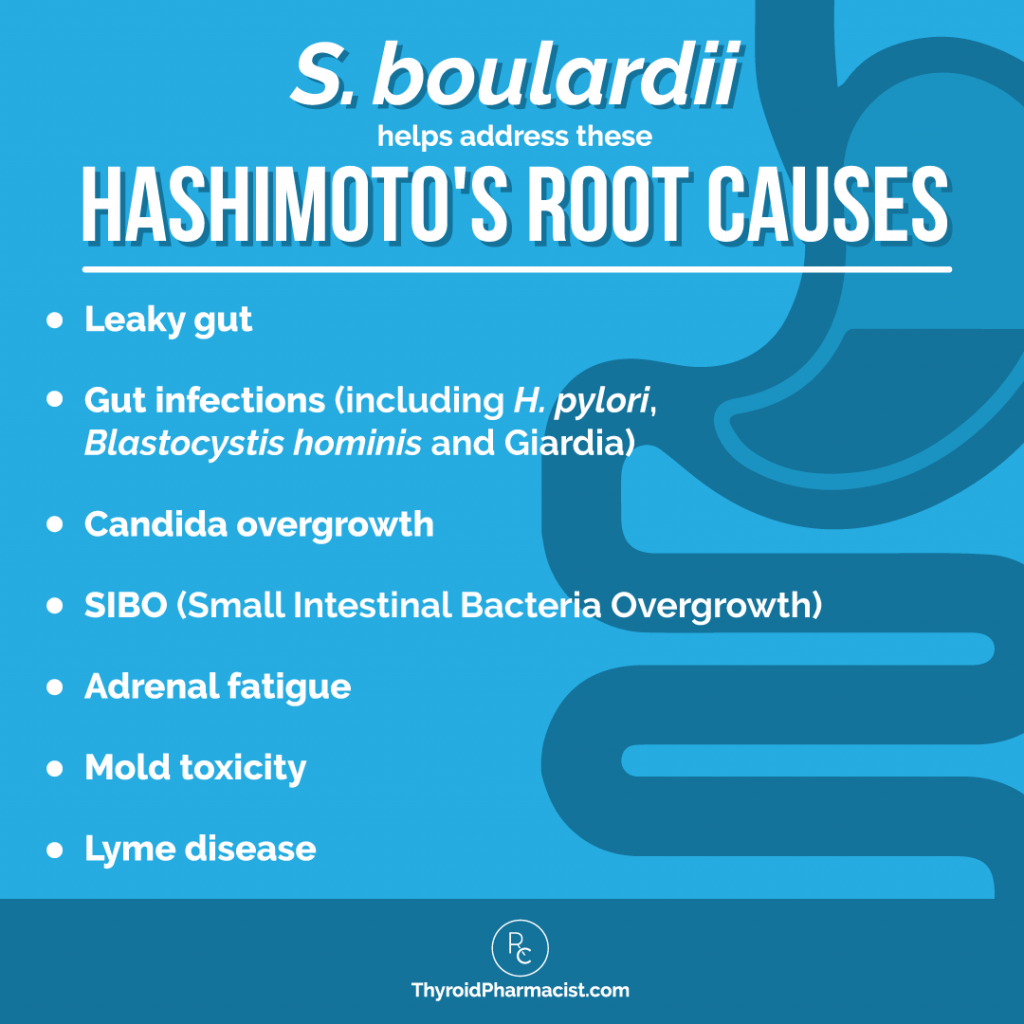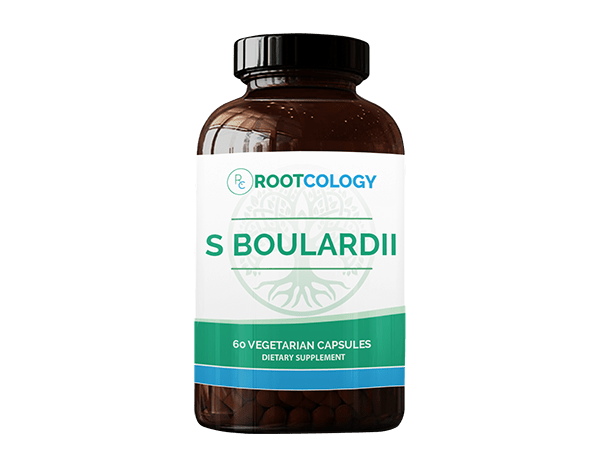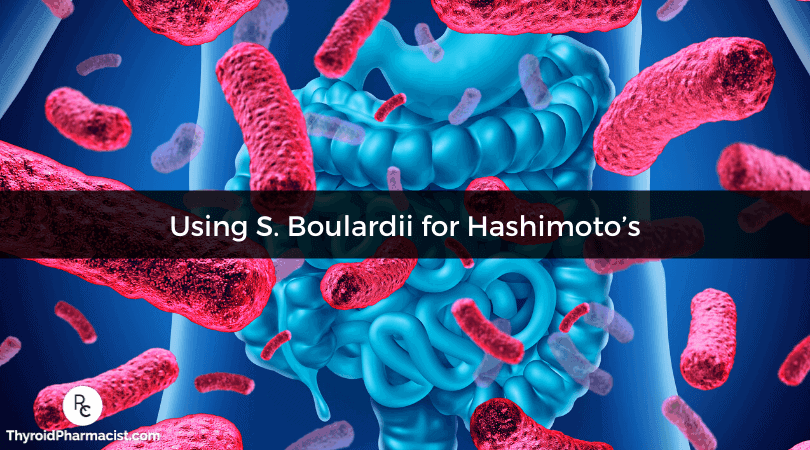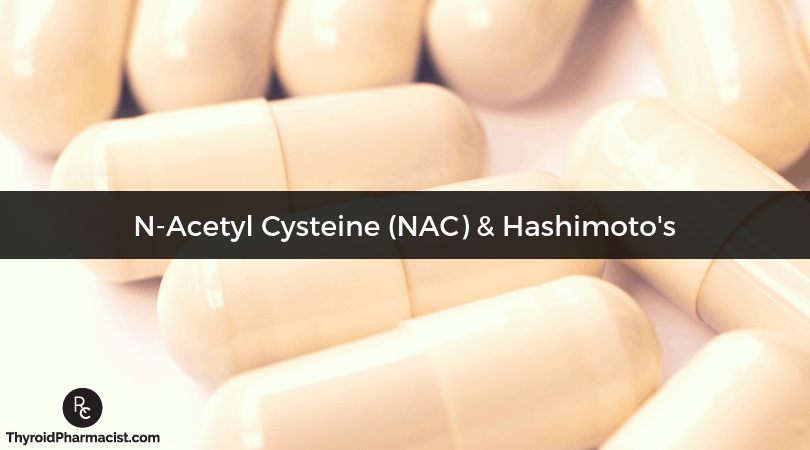I first learned about S. boulardii as a young pharmacist. It is a beneficial yeast (also known as a probiotic yeast) that is often recommended to people who take antibiotics, to counteract the gut imbalance that can occur when antibiotics kill off our “good” bacteria, in addition to any of the pathogenic bacteria they were initially taken to kill. This particular probiotic is thought to be most effective in restoring dysbiosis from antibiotics because, in contrast to most probiotics which are bacterial in origin and can be killed by bacteria-targeting antibiotics, S. boulardii is a yeast, and most antibiotics are not effective against yeast. (1)
S. boulardii is also known to be a wonderful tool that can be used to prevent traveler’s diarrhea (I wish I had known about this when I went to visit relatives in Poland back before I had my Hashimoto’s diagnosis, and had to run out of a family gathering to my great aunt’s outhouse — but I digress!). (2,3)
As someone who has a history of irritable bowel syndrome and takes gut health seriously, I use S. boulardii preventatively, whenever I travel (it’s been my go-to since 2012!). I also started giving it to my hubby after a relaxing vacation in the Dominican Republic turned awful due to him experiencing food poisoning… While we both ate the same foods, I did not develop food poisoning, and I believe the S. boulardii protected me.
It’s also a wonderful tool to boost immunity. (4)
In Fall 2019, I noticed that my son was getting colds and various infections whenever I took him to public places like the pumpkin patch, pet stores, and the like. I was still nursing back then, so I was surprised that he was getting sick so easily — but when I did some gut testing for both of us, I found we both had low levels of secretory IgA. (This is actually one of the most common abnormalities I see in people with Hashimoto’s. I have tested around 300 clients using the GI-MAP test between 2017 and 2019, and 49 percent of people had low secretory IgA.)
Secretory IgA, or SIgA, is known as the respiratory and GI tracts’ first line of defense. It can prevent the adhesion of parasites, bacteria, viruses, and other pathogens to our respiratory and gut linings.
S. boulardii has been shown to boost Secretory IgA, so I started taking my Rootcology S. Boulardii again, and started Dimitry on it as well. (4) S. boulardii is very safe, even for infants as young as two months old — the capsules can be opened and sprinkled into breast milk or purées (I talk more in depth about S. boulardii for children near the end of the article). Within a short period of time, I noticed that we both seemed to be more resilient to the illnesses that were circulating around us.
Additionally, S. boulardii has become one of my favorite supplements for restoring gut health, and poor gut health is a common root cause of Hashimoto’s. I have especially found it helpful for supporting the body in clearing out a number of different infections — and unlike many probiotics, it’s generally considered to be safe for SIBO (small intestinal bacterial overgrowth), which can be present in up to 50 percent of people with hypothyroidism. (5-8)
In this article, you will learn:
- What S. boulardii is
- What conditions may benefit from S. boulardii
- How S. boulardii can support Hashimoto’s root causes
- Best practices for supplementation
What is S. boulardii?
Saccharomyces boulardii, or S. boulardii, is often referred to as a probiotic, but is actually a beneficial yeast that is usually taken in the form of a supplement. It has been used clinically for more than 50 years, originally for the prevention and treatment of infectious diarrhea. (2,3) That said, S. boulardii has been used traditionally as a component of an herbal preparation for hundreds, if not thousands, of years, well before scientists were able to identify and classify bacteria or yeast.
S. boulardii was named after the French microbiologist who discovered it, Henri Boulard. The story goes something like this: in the 1920s, Boulard was in Indonesia, where a medicinal tea was used as a treatment for the diarrhea associated with cholera. Boulard discovered that the tea, which contained mangosteen skin and lychee, owed its medicinal benefits to S. boulardii, which was able to proliferate at high temperatures. Upon returning to France, Boulard patented his discovery. Official research and publications on the strain began in the 1940s and 1950s. (8)
We now know that while moving through the digestive system, S. boulardii helps to clean up the intestines and improve microbial balance, but it doesn’t take up residence in the gut by multiplying there. Instead, it helps to clear out and remove opportunistic and pathogenic organisms from the gut, such as yeast, bacteria, and parasites. In other words, S. boulardii helps to set up a healing environment in the gut and takes the pathogens along with it, when it leaves the body through bowel movements. This helps to prevent new infections and reinfections. (10)
As mentioned earlier, S. boulardii has been shown to help raise secretory IgA, an immunoglobulin (antibody) that plays a critical role in the immune function of the mucosal linings of the body, and helps to provide a protective barrier (SIgA is the first line of defense for the respiratory and GI tract). (4) It can prevent the adhesion of viruses, bacteria, parasites, and other pathogens, to our respiratory and gut linings. Numerous studies have shown improved outcomes in various infections, as well as in cancers and gut issues, from supplementing with S. boulardii.
I have found that around 50 percent of people with Hashimoto’s tend to have low secretory IgA. This could be partially due to genetic factors (if you’re a non-secretor like I am), infections you may have, or lifestyle factors (like stress and sleep deprivation). (9)
What Conditions May Benefit from S. boulardii?
Most of the research on S. boulardii over the years has looked at conditions that cause diarrhea. This includes diarrhea from pathogens (bacteria, viruses, fungi), traveler’s diarrhea, HIV-related diarrhea, antibiotic-associated diarrhea, Clostridium difficile infections, and others.
The reason S. boulardii works so well for diarrhea is that it stimulates the release of immunoglobulins (antibodies) and messengers (such as cytokines), as well as helps immune cells to mature. Since S. boulardii binds to pathogenic bacteria, it can neutralize toxins and decrease the pathogens that adhere to the walls of the digestive system. Essentially, it calms an overactive immune response in the digestive system. (6,7,10)
In one review conducted by Stier and Bischoff, which looked at the available studies on the efficacy of using S. boulardii to treat infectious diarrhea, the authors observed that not only did the S. boulardii bind pathogenic bacteria, but it also reduced the overreacting inflammatory immune response by interfering with the signaling cascade, which is induced by the infection. This decreased the pathogens’ potential to adhere to the intestines, protecting the intestinal epithelial layer and reducing diarrhea-induced fluid loss. (2)
The scientific literature shows that S. boulardii is safe and beneficial for acute diarrhea, even for children. It can also be used concurrently with antibiotics to prevent gastrointestinal symptoms. (12) In fact, I recommend using S. boulardii along with antibiotics in order to prevent dysbiosis, an imbalance in gut bacteria that so often results from antibiotic use.
Furthermore, S. boulardii benefits the gut by reducing inflammation in the digestive system and helping to reverse leaky gut. (5)
Because of the immune and gut-protective benefits of S. boulardii, more recent research has looked at this supplement for a variety of other conditions, including:
What’s interesting about this list is that these are conditions that I often see either as a root cause of Hashimoto’s, or as a co-occurring diagnosis or symptom in my clients.
To learn more about addressing and overcoming gut issues, download my free Gut Problems Guide below!
How Does S. boulardii Benefit Hashimoto’s?
Although there isn’t any current research specifically looking at the direct impact of S. boulardii on Hashimoto’s or thyroid health, by taking a root cause approach, it is clear that S. boulardii can help to address some of the underlying factors in autoimmune thyroiditis.
Gut Health
Improving gut health and addressing infections are key components of getting Hashimoto’s into remission — and as mentioned above, S. boulardii can help with both of those.
Hippocrates is given credit for the notion that “all disease begins in the gut,” and this is no exception for Hashimoto’s. According to Dr. Fasano, Hashimoto’s, and all autoimmune conditions, require three factors — a genetic predisposition, an environmental trigger (such as heavy metal toxicity or an infection), and leaky gut (intestinal permeability) — in order to be present. This is called the three-legged stool of autoimmunity. (20)
Leaky gut occurs when the junctions between the epithelial cells (cells that line the small intestine) become loose or leaky. Larger proteins can then make their way into the body, causing an immune reaction. S. boulardii has been shown to restore and strengthen these junctions, and even decrease leaky gut. (5)
One study that examined the impact of S. boulardii on cells taken from the colons of people with inflammatory bowel disease (IBD), found that the S. boulardii protected the epithelial cells (surface tissue) and improved the adhesion of one cell to another. This led to the overall restoration and strengthening of intestinal barrier function. (21)
If you are currently experiencing digestive symptoms or Hashimoto’s symptoms in general, I always recommend digging deeper to heal your leaky gut and any potential gut infections.
Infections
Since S. boulardii boosts SIgA, it can help in the defense against chronic infections, including Blastocystis hominis, H. pylori, Candida, SIBO, Giardia, and other infections that are common root cause triggers in people with Hashimoto’s.
- Blastocystis hominis is the most common parasite that I’ve seen in people with Hashimoto’s, that can be linked to the uncomfortable symptoms of both chronic hives and IBS. A recent study of 20 people with Hashimoto’s found that eradicating Blastocystis hominis can reduce TSH and TPO antibodies, and produce a remission of Hashimoto’s. (22) I have seen this pattern since 2013, and I’m excited to finally have some scientific research to back up my clinical findings! The researchers used the medication Alinia, which I used to recommend as well. However, in recent years, I have begun using an S. boulardii supplement as a starting point instead. In one study of Blastocystis hominis in children, S. boulardii produced an outcome similar to the anti-parasitic medication metronidazole, and reversed symptoms in 94.4 percent of the study group, in one month. (12)
- H. pylori is another bacterial infection of the stomach that may trigger Hashimoto’s thyroiditis. (In my clinical experience, using the now retired 401H gut test from BioHealth, I have learned that over 80 percent of my clients had such an infection. Clinically, I’ve seen thyroid antibodies reduced once H. pylori has been treated!) H. pylori can lead to reduced stomach acid levels, nutrient deficiencies, inflammation, and leaky gut. (23) S. boulardii, although not a treatment on its own, has been shown to improve the effectiveness of H. pylori treatments, reduce symptoms from the treatment (such as diarrhea and nausea), and prevent dysbiosis. (17) (As a side note, I have been “crunching the numbers” of various types of infections I’ve found in clients and program participants since 2016 using the GI-MAP test, and will be publishing an article with the results!)
- A third gut infection that can be a Hashimoto’s trigger for some is Candida overgrowth, and an S. boulardii supplement can be supportive in healing from Candida as well. Remember that S. boulardii is a probiotic yeast, so it makes sense that it can help clear pathogenic yeast strains like Candida and keep them balanced with the rest of the organisms in the colon. The research confirms this and shows that S. boulardii reduces the adhesion of Candida in the gut, as well as reduces biofilm formation. (15) (Biofilms simply refer to a protective barrier over pathogens, protecting them from harm.) Preventing biofilm formation of pathogens or using treatments that help to break down biofilms, is an important functional medicine approach for gut health.
- SIBO (small intestinal bacterial overgrowth) is a gut condition that I also see in many people with Hashimoto’s. In SIBO, bacteria and yeast from the colon migrate up into the small intestine, which normally contains very little bacteria compared to the large intestine. This overpopulation of bacteria causes food to ferment and leads to gas, bloating, constipation, or diarrhea, among other symptoms. (24) Often, the root cause of IBS, can actually be SIBO. (25) In this case, using probiotics can make the situation worse by increasing the bacteria that are living in the wrong place. S. boulardii is an exception to this, and is generally well tolerated and helpful for SIBO (likely since the S. boulardii yeast doesn’t stick around in the gut and instead passes through, carrying pathogens out with it). (26)
In a study that evaluated the use of S. boulardii in conjunction with the antibiotic metronidazole to treat the gastrointestinal symptoms of patients with SIBO, one group was given just the antibiotic. Another group was only given S. boulardii, while the third group was given a combination of both. After two months of treatment, SIBO was eradicated in 55 percent of the metronidazole and S. boulardii group, 33 percent of the S. boulardii-only group, and 25 percent of the metronidazole-only group. The groups using an S. boulardii treatment (both with metronidazole and on its own) had decreased diarrhea, abdominal pain, and gas/bloating/flatulence, but the symptoms in the metronidazole group remained unchanged. The authors concluded that metronidazole treatment is partially effective in treating SIBO, but S. boulardii in monotherapy or in combination improves gastrointestinal outcomes by binding to bacteria and helping to clear it from the gut. (25)
- Mold toxicity is another potential root cause that I’ve seen with Hashimoto’s. If you’ve been exposed to a moldy environment, it is quite possible that the mold has taken up residence in your body, including your gut and sinuses. In addition to removing the source of the mold, you will most likely need additional interventions to clear the mold from your body. The presence of mold in the sinuses and intestines can lead to intestinal permeability (leaky gut) and become a trigger for autoimmune disease. I haven’t seen any studies to support this, but clinically, I have reports of symptom improvement and have seen a reduction of mold markers, on follow-up lab tests of those who have used S. boulardii.
- Urinary Tract Infections (UTIs) are quite common, affecting 50 to 60 percent of all women. Eighty percent of UTIs are caused by E. coli, though other strains can also be culprits. (27) Many of my clients with Hashimoto’s have reported frequent UTIs, and it is possible that an imbalance of gut flora and intestinal permeability (leaky gut), which are holes in the gut lining that can allow bacteria to travel throughout the digestive system, may be the cause of UTIs in those with Hashimoto’s, as leaky gut is a factor that must be present in order for autoimmunity to occur. Researchers in one study of 24 children, sought to evaluate the influence of an oral S. boulardii intake on the number of E. coli colonies in the colon. A commercial capsule or powder containing 5 billion colony-forming units (CFU) of S. boulardii was administered once a day, for five days. The number of E. coli colonies in the stool samples decreased by over 98 percent between the beginning and end of treatment, leading researchers to find that S. boulardii may be an effective treatment for UTIs. (16)
- Lyme disease, a tick-borne illness, carries with it a co-infection called Borrelia burgdorferi that I believe can be a trigger for Hashimoto’s. Because these infections affect gut health, and are often treated with large doses of antibiotics, adding in beneficial probiotics is essential to restoring intestinal flora, preventing Candida overgrowth, and clearing the infection from the intestinal tract. (14)

Adrenal Dysfunction
In my functional medicine training, I learned about three important body systems that need to be addressed in order to reverse chronic illness: the liver, the adrenals, and the gut. In reviewing my clients’ health timelines, I have found that the development of chronic illness usually follows a pretty predictable pattern for the majority of them.
First, a person goes through an intense period of stress (such as the loss of a loved one, or a big life change like a new child, cross-country move, or graduate school). This stressful period is followed by some non-specific gut symptoms (acid reflux, constipation, bloating, irritable bowel syndrome, diarrhea), and then the development of some “soft” signs of liver backlog (acne, allergies becoming worse).
My research has led me to believe that, on a biological level, stress depletes our body’s secretory IgA (among other things, like stomach acid and various nutrients, especially vitamin C and magnesium). This then increases our susceptibility to gut infections that would normally be considered “self-limiting” and would just “pass through” our system. Instead, they end up colonizing and setting up a home (enter the gut symptoms). At this point, the gut, one of the body’s major pathways of elimination, becomes backed up, and the body over-relies on the liver to eliminate waste. This liver backlog is something I focus on in the Liver Reset Protocol, which makes up the first part of my book Hashimoto’s Protocol.
My second protocol focuses on restoring the health of the stress response, so that secretory IgA can be restored, and can help the body’s normal defense in clearing infections. I believe that with adequate secretory IgA, even those chronic gut infections I often find in people with Hashimoto’s, end up passing through, like they would in an otherwise “healthy” individual.
Adrenal fatigue is a factor for most people with Hashimoto’s, as sleep disorders, stress, blood sugar imbalances, and chronic inflammation are all contributing causes. (28) Chronic inflammation in the body can be linked to inflammation in the GI tract due to bowel disorders (such as IBS), pathogens, and food sensitivities. (29)
There are various ways to support adrenal health: some of them involve the use of stress reduction techniques, sleeping, breathing, removing inflammatory foods, adding hormones and steroids (like DHEA, pregnenolone, progesterone, and hydrocortisone), using adaptogens, considering adrenal glandulars, supplementing with vitamins/minerals, and more. Please check out my article on adrenal health for more information. (30)
Experienced functional medicine practitioners have found that an adrenal protocol is often needed as a first step in supporting gut health, to restore secretory IgA (SIgA) levels. Otherwise, one will have a harder time fighting infections and may get reinfected. (31)
I have found that adding in S. boulardii can lead to better outcomes in overcoming gut infections, without the need for adrenal steroids, resulting in less stress on the adrenals. I have even included it as part of my Rootcology Adrenal Transformation Kit.
How to Supplement with S. boulardii
S. boulardii is very well tolerated as an oral supplement, and any digestive side effects are extremely rare. It’s important to note that not all probiotics are created equal, however. Many common brands that you can find in a health food store or pharmacy, have low concentrations of probiotic bacteria.
Such concentrations are not enough to rebalance the gut in autoimmune disease. Other versions need to be kept in the fridge. I don’t know about you, but I often FORGET to take the supplements that I keep in my fridge! This is why I wanted to include a heat-stable S. boulardii supplement in my Rootcology supplement line.

This strain does not require refrigeration and has the ability to survive passage through the harsh gastric environment, withstanding high acidity, bile, and heat.
For a limited time, I am offering a 10% off discount on Rootcology S. Boulardii. Simply enter the code BOULARDII2022 at checkout to receive your discount through October 21st at 11:59pm PT.
Plus, with Rootcology’s 30-day, 100% satisfaction guarantee, you have nothing to lose but your symptoms! If you are unsatisfied for any reason, you may return the product within 30 days for a full refund, minus shipping/handling fees.
I always recommend starting at a low dose of 1-2 capsules per day. The old pharmacist’s adage is “start low and go slow!” If you experience die-off symptoms, such as headaches, fatigue, gastrointestinal distress, muscle soreness, or flu-like symptoms, you may want to reduce your dose to ½ capsule daily, or even ½ capsule every other day.
I recommend increasing your dosage by 1 capsule, every 3-7 days.
According to the research studies I included in this article, the following doses have been used in various conditions.
Please note that the strength of the probiotic is sometimes expressed in the active number of microbes or colony-forming units (CFUs) within the capsules, and sometimes in milligrams (mg). I often specify the number of capsules when I recommend specific products. In my Rootcology capsules, one capsule contains 250 mg of S. boulardii, which is equivalent to about 5 billion CFUs.
- Blastocystis hominis: 250 mg, two times daily, for 15 days. This amount was used in a study of children and would translate to 5 billion CFUs, or 1 capsule twice per day, if using Rootcology S. Boulardii. However, for my adult clients, I generally recommend 1-2 capsules of Rootcology S. Boulardii, twice per day, for 60 days, just to ensure we cover two life cycles of the parasite.
- H. pylori: 100-1000 mg daily, for a period of 1-4 weeks. One dose would be between a little less than ½ of a Rootcology capsule (100 mg) and 4 Rootcology capsules (1000 mg).
- SIBO: 200 mg, two times per day for a period of two weeks, followed by a rest period of two weeks, and then another two-week period of 200 mg, two times per day. This would be about 4/5ths of a Rootcology capsule per dose.
- Urinary tract infections: 5 billion CFUs (one dose would be equivalent to one-half of a Rootcology capsule), taken once per day, for five days.
Personally, I’ve used up to 8 capsules of Rootcology S. Boulardii per day, and this higher dose may be required for effectively clearing out pathogens and restoring gut health. S. boulardii can be taken for three months, up to two years.
As part of a protocol to clear mold from the body, I have used S. boulardii at a dose of 5 billion to 10 billion CFUs, 2-4 times per day (up to 8 Rootcology capsules per day), for 60 days.
I recommend spacing S. boulardii and thyroid medications apart by 30-60 minutes. In addition, I suggest taking S. boulardii two or three hours apart from any anti-yeast, anti-parasitic, or antibacterial herbs.
S. boulardii can also be taken along with other probiotics (unless you have SIBO). Lactobacillus and spore-based probiotics may be particularly beneficial and tolerated with Hashimoto’s, along with fermented foods, depending on one’s personal root causes.
Some of you may wonder about using S. boulardii in children, as I mentioned using it with my son at two years old. I’ve found that S. boulardii is very safe and can be used in infants as young as two months old. I often dispensed and recommended it to littles that had to take antibiotics, while I was working in the pharmacy. The recommended dose for children is 250 mg, 1-2 times daily (be sure you check the dosage on the version you use). If using the Rootcology brand, this would be one capsule, 1-2 times per day, opened, and sprinkled into breastmilk, formula, applesauce, or a purée.
Florastor Kids is a brand that is specifically marketed to children that I used to recommend. However, it does contain a LOT of fructose and some lactose, so that is something to consider.
Precautions
Unlike other supplements, if some mild digestive upset occurs with the use of S. boulardii, this could mean that it is actually doing its job! Part of this is because S. boulardii may cause a “die off” reaction. As pathogens in the digestive system die or are displaced, they may release toxins as they are cleared through the digestive system. These “toxins” may cause symptoms, including headaches, fatigue, gastrointestinal distress, muscle soreness, or flu-like symptoms, and can generally last three to seven days. (32)
If this occurs, you may just need to back off on the dosage a bit and then increase it gradually as you build up your tolerance.
S. boulardii has been associated with fungemia in immunocompromised individuals with weakened immune systems. However, Hashimoto’s is typically associated with having an overactive immune system. As such, having Hashimoto’s does not necessarily mean a person is immunocompromised, but it is possible to both have Hashimoto’s and be immunocompromised. (33,35)
For almost everyone, S. boulardii sets up the gut environment and then leaves, taking pathogens with it. I know of only one case where S. boulardii did colonize in the colon, but that appears to be a rare occurrence. Furthermore, I’ve learned from research that in some cases of Crohn’s disease, S. boulardii may cross-react with anti-Saccharomyces cerevisiae (another type of yeast) antibodies. (34)
Finally, it may require a bit of caution for someone who has a yeast allergy.
The above-mentioned scenarios are rare, but worth mentioning here. If you have Crohn’s, are immunocompromised, or have any other conditions that may be of concern, please work with your provider for personalized care before starting S. boulardii to make sure it is appropriate for your needs.
The Takeaway
There is a good reason that S. boulardii is one of my favorite supplements: I’ve found that it is generally safe and effective for addressing some of the major Hashimoto’s root causes and symptoms, such as antibiotic-induced dysbiosis, adrenal dysfunction, and some gut infections.
If you have been dealing with digestive issues, are looking for ways to support your adrenal health, or want to boost your immune support in general, you may benefit from adding S. boulardii to your daily routine.
Have you tried S. boulardii? I’d love to hear about your experience with it!
Wishing you all the best on your journey!
P.S. For further support on your health journey, you can download a Thyroid Diet Guide, 10 thyroid-friendly recipes, and the Nutrient Depletions and Digestion chapter of my first book for free! You will also receive occasional updates about new research, resources, giveaways, and helpful information.
For continued updates and interaction, please become a part of my Facebook and Instagram communities, and sign up for my newsletter. I love interacting with my readers!
References
- Noverr MC, Noggle RM, Toews GB, Huffnagle GB. Role of antibiotics and fungal microbiota in driving pulmonary allergic responses. Infect Immun. 2004;72(9):4996-5003. doi:10.1128/IAI.72.9.4996-5003.2004
- Stier H, Bischoff SC. Saccharomyces boulardii CNCM I-745 influences the gut-associated immune system. MMW Fortschr Med. 2017;159 (Suppl 5):1-6. doi: 10.1007/s15006-017-9802-3.
- Feizizadeh S, Salehi-Abargouei A, Akbari V. Efficacy and safety of Saccharomyces boulardii for acute diarrhea. Pediatrics. 2014;134(1):e176-91. doi: 10.1542/peds.2013-3950.
- Rodrigues AC, Cara DC, Fretez SH, Cunha FQ, Vieira EC, Nicoli JR, Vieira LQ. Saccharomyces boulardii stimulates sIgA production and the phagocytic system of gnotobiotic mice. J Appl Microbiol. 2000; 89(3):404-14.
- Terciolo C, Dobric A, Ouaissi M, Siret C, Breuzard G, Silvy F, et al. Saccharomyces boulardii CNCM I-745 restores intestinal barrier integrity by regulation of Ecadherin recycling. J Crohns Colitis. 2017;11(8):999-1010. doi: 10.1093/ecco-jcc/jjx030.
- Terciolo C, Dapoigny M, Andre F. Beneficial effects of Saccharomyces boulardii CNCM I-745 on clinical disorders associated with intestinal barrier disruption. Clin Exp Gastroenterol. 2019;12:67-82. doi: 10.2147/CEG.S181590.
- García-Collinot G, Madrigal-Santillán EO, Martínez-Bencomo MA, et al. Effectiveness of Saccharomyces boulardii and Metronidazole for Small Intestinal Bacterial Overgrowth in Systemic Sclerosis. Dig Dis Sci. 2020;65(4):1134-1143. doi:10.1007/s10620-019-05830-0
- McFarland, LV. From Yaks to Yogurt: The History, Development, and Current Use of Probiotics, Clin Infect Dis. 2015;60(2): S85–S90. https://doi.org/10.1093/cid/civ054
- Patil AD. Link between hypothyroidism and small intestinal bacterial overgrowth. Indian J Endocrinol Metab. 2014;18(3):307-309. doi:10.4103/2230-8210.131155
- Pothoulakis C. Review article: anti-inflammatory mechanisms of action of Saccharomyces boulardii. Aliment Pharmacol Ther. 2009;30(8):826-833. doi:10.1111/j.1365-2036.2009.04102.x
- Szajewska H, Kolodziej M. Systematic review with meta-analysis: Saccharomyces boulardii in the prevention of antibiotic-associated diarrhea. Aliment Pharmacol Ther. 2015;42(7):793-801. doi: 10.1111/apt.13344.
- Pais P, Almeida V, Yılmaz M, Teixeira MC. Saccharomyces boulardii: What Makes It Tick as Successful Probiotic?. J Fungi (Basel). 2020;6(2):78. Published 2020 Jun 4. doi:10.3390/jof6020078
- Dinleyici EC, Eren M, Dogan N, Reyhanioglu S, Yargic ZA, Vandenplas Y. Clinical efficacy of Saccharomyces boulardii or metronidazole in symptomatic children with Blastocystis hominis infection. Parasitol Res. 2011;108(3):541-5. doi: 10.1007/s00436-010-2095-4.
- Bafutto M, Almeida JR, Leite NV, Costa MB, Oliveira EC, Resende-Filho J. Treatment of diarrhea-predominant irritable bowel syndrome with mesalazine and/or Saccharomyces boulardii. Arq Gastroenterol. 2013;50(4):304-309. doi:10.1590/S0004-28032013000400012
- Lochhead RB, Strle K, Arvikar SL, Weis JJ, Steere AC. Lyme arthritis: linking infection, inflammation and autoimmunity. Nat Rev Rheumatol. 2021;17(8):449-461. doi:10.1038/s41584-021-00648-5
- Krasowska A, Murzyn A, Dyjankiewicz A, Lukaszewicz M, Dziadkowic D. The antagonistic effect of Saccharomyces boulardii on Candida albicans filamentation, adhesion and biofilm formation. FEMS Yeast Res. 2009;9(8):1312-21. doi: 10.1111/j.1567-1364.
- Akil I, Yilmaz O, Kurutepe S, Degerli K, Kavukcu S. Influence of oral intake of Saccharomyces boulardii on Escherichia coli in enteric flora. Pediatr Nephrol. 2006 Jun;21(6):807-10.
- Szajewska H, Horvath A, Kolodziej M. Systematic review with meta-analysis: Saccharomyces boulardii supplementation and eradication of Helicobacter pylori infection. Ailment Pharmacol Ther. 2015;41(12):1237-45. doi: 10.1111/apt.13214.
- Agawane SB, Lonkar PS. Effect of probiotic containing Saccharomyces boulardii on experimental ochratoxicosis in broilers: hematobiochemical studies. J Vet Sci. 2004;5(4):359-367.
- Fasano A. Leaky gut and autoimmune diseases. Clin Rev Allergy Immunol. 2012;42(1):71-78. doi:10.1007/s12016-011-8291-x
- Canonici A, Pellegrino E, Siret C, et al. Saccharomyces boulardii improves intestinal epithelial cell restitution by inhibiting αvβ5 integrin activation state. PLoS One. 2012;7(9):e45047. doi:10.1371/journal.pone.0045047
- El-Zawawy HT, Farag HF, Tolba MM, Abdalsamea HA. Improving Hashimoto’s thyroiditis by eradicating Blastocystis hominis: Relation to IL-17. Ther Adv Endocrinol Metab. 2020;11:2042018820907013. Published 2020 Feb 21. doi:10.1177/2042018820907013
- FitzGerald R, Smith SM. An Overview of Helicobacter pylori Infection. Methods Mol Biol. 2021;2283:1-14. doi:10.1007/978-1-0716-1302-3_1
- Rao SSC, Bhagatwala J. Small Intestinal Bacterial Overgrowth: Clinical Features and Therapeutic Management. Clin Transl Gastroenterol. 2019;10(10):e00078. doi:10.14309/ctg.0000000000000078
- Ghoshal UC, Shukla R, Ghoshal U. Small Intestinal Bacterial Overgrowth and Irritable Bowel Syndrome: A Bridge between Functional Organic Dichotomy. Gut Liver. 2017;11(2):196-208. doi:10.5009/gnl16126
- García-Collinot G, Madrigal-Santillán EO, Martínez-Bencomo MA, et al. Effectiveness of Saccharomyces boulardii and Metronidazole for Small Intestinal Bacterial Overgrowth in Systemic Sclerosis. Dig Dis Sci. 2020;65(4):1134‐1143. doi:10.1007/s10620-019-05830-0.
- Ejrnæs K. Bacterial characteristics of importance for recurrent urinary tract infections caused by Escherichia coli. Dan Med Bull. 2011;58(4):B4187.
- Charmandari E, Nicolaides NC, Chrousos GP. Adrenal insufficiency. Lancet. 2014;383(9935):2152-2167. doi:10.1016/S0140-6736(13)61684-0
- Ng QX, Soh AYS, Loke W, Lim DY, Yeo WS. The role of inflammation in irritable bowel syndrome (IBS). J Inflamm Res. 2018;11:345-349. Published 2018 Sep 21. doi:10.2147/JIR.S174982
- Wilson J. Clinical perspective on stress, cortisol and adrenal fatigue. Adv Integr Med. 2014;1(2):93-96. doi:10.1016/j.aimed.2014.05.002.
- Mantis NJ, Rol N, Corthésy B. Secretory IgA’s complex roles in immunity and mucosal homeostasis in the gut. Mucosal Immunol. 2011;4(6):603-611. doi:10.1038/mi.2011.41
- Dhakal A, Sbar E. Jarisch Herxheimer Reaction. In: StatPearls. Treasure Island (FL): StatPearls Publishing; April 28, 2022.Kollaritsch H, Holst H, Grobara P, Wiedermann G. Prophylaxe der Reisediarrhöe mit Saccharomyces boulardii. Ergebnisse einer plazebokontrollierten Doppelblindstudie [Prevention of traveler’s diarrhea with Saccharomyces boulardii. Results of a placebo controlled double-blind study]. Fortschr Med. 1993;111(9):152‐156.
- Riquelme AJ, Calvo MA, Guzmán AM, et al. Saccharomyces cerevisiae fungemia after Saccharomyces boulardii treatment in immunocompromised patients. J Clin Gastroenterol. 2003;36(1):41-43. doi:10.1097/00004836-200301000-00013
- Mallant-Hent RC, Mooij M, von Blomberg BM, Linskens RK, van Bodegraven AA, Savelkoul PH. Correlation between Saccharomyces cerevisiae DNA in intestinal mucosal samples and anti-Saccharomyces cerevisiae antibodies in serum of patients with IBD. World J Gastroenterol. 2006;12(2):292-297. doi:10.3748/wjg.v12.i2.292
- Camilleri M. Leaky gut: mechanisms, measurement and clinical implications in humans. Gut. 2019;68(8):1516-1526. doi:10.1136/gutjnl-2019-318427
- Kudielka BM, Wüst S. Human models in acute and chronic stress: assessing determinants of individual hypothalamus-pituitary-adrenal axis activity and reactivity. Stress. 2010;13(1):1-14. doi:10.3109/10253890902874913
- Brower V. When the immune system goes on the attack. EMBO Rep. 2004;5(8):757-760. doi:10.1038/sj.embor.7400217
Originally published in June of 2020, this article has been updated and expanded for thoroughness and accuracy.



